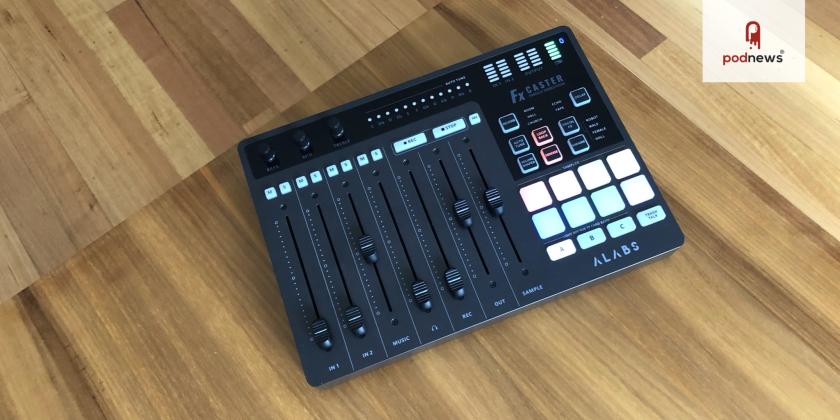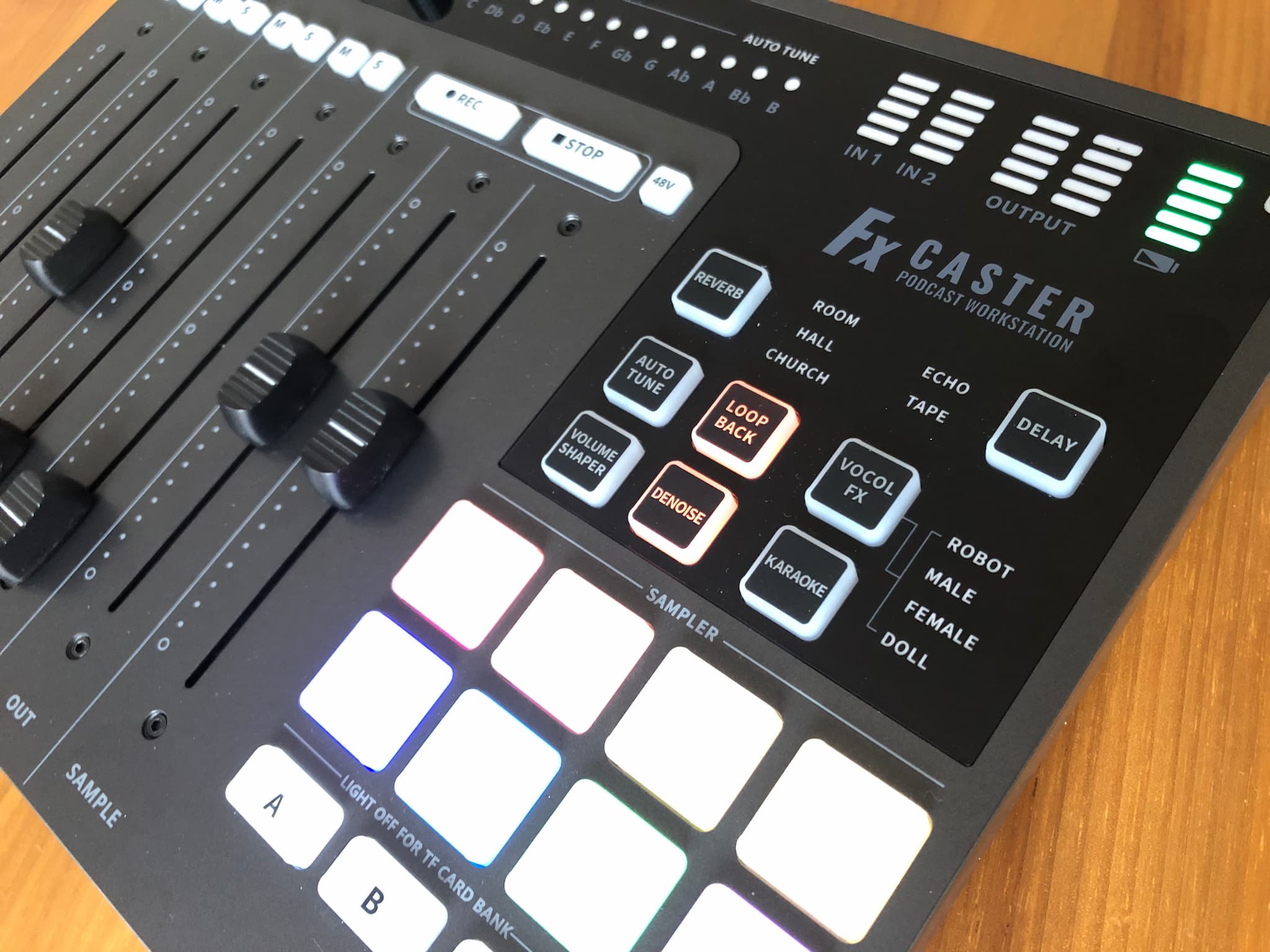
Review: the ALABS FXCaster Podcast Workstation

This article is at least a year old
We reviewed the ALABS Audio wireless condenser microphone back in May of last year. It was an unusual and promising device from this company, firmly aimed at the beginner end of the market.
The impressively SEO’d ALABS Fxcaster Podcast Equipment Bundle - All-in-One Podcasting Starter Setup with 7-Channel Soundboard, Audio Interface, and 25mm Diaphragm XLR Microphone for Live Streaming, Recording, and TikTok arrived for me to review in November. I had a little play, but realised that I needed a cable to test it properly, so I could feed the output of this mixer into my amplifier and speakers. That cable having now been acquired, here’s a (late) review, but one that I hope is helpful.
This unit clearly looks like it wishes to compete with the RØDECaster Pro - the same kind of layout and ostensibly the same featureset. It records direct onto an SD card, it has buttons to fire off jingles, it has a Bluetooth connection, and the level-setting LEDs look much the same.
The RØDECaster is US $699, though: and for that, you just get the mixer unit. The FXCaster is an astonishing $199, and that price also includes a 1GB TF card, condenser microphone with a boom arm and an XLR cable. It’s astonishing value on the face of it. But… is it?
It comes with a nice manual, which isn’t available on the ALABS website, but here’s a version of the manual, on a third-party site.
Now: I’ve not used a RØDECaster (other than spend a few minutes with one). But in my previous life, I worked in radio, and spent many hours behind a mixing desk. That mixing desk was tens of thousands of dollars, though; so perhaps I come into this with slightly unfair expectations. It’s the first mixer I’ve used for fifteen years, after all.

The FXCaster is made of plastic, and feels very light. Buttons are OK-feeling, though they don’t feel premium.
The faders have a central ‘click’ position, also marked on the device, which goes against all my training (which would expect to open them almost all the way). But it only actually has four input faders; the other three are faders controlling your headphones, the record level, and the output. Slightly confusingly, these aren’t separate: and the input fader for the sample buttons is on the far right, after the output faders.
Those sample buttons work, though (if using the TF card) there’s an appreciable delay between hitting them and the audio coming out. They also don’t appear to always work, sometimes only playing on a second push.
Plug in a USB-C connected to your computer, and it comes up as a USB interface on your computer (both input and output). That appears on the “music” fader. So does Bluetooth - if you connect your phone to this Bluetooth, it’ll also appear (quite quietly) on the music fader.
There’s a “REC” button on the unit, which records everything you do. Those recordings are made on the TF card in MP3 format, 96kbps (44.1kHz) in mono, rather disappointingly. They’re also not multitrack. You can’t get the recordings off the device without manually ejecting the TF card, either.
The system is stereo, though (feeding it an old Beatles track faithfully plays back with vocals out of the right channel). It just doesn’t record in stereo. Huh. The level indicator on the unit looks as if it is stereo (since there’s two channels), but it isn’t, just monitoring a mono mix.
While the unit presents itself as an input device when you plug it into a computer, you don’t appear to get any output from it while it’s playing back. So, you can’t use it as a live mixer (via USB) as far as I can see.
It has an auto-tune function (not sure how many podcasters would use that), as well as something called a “volume shaper” which automatically ducks music if you walk. There are reverb and the mis-spelt “vocol fx” effects, too, which can make your microphone sound like a robot, or a doll. Fun toys for someone starting out, but unlikely to be used.
And perhaps that’s the way to think of this US$199 unit (with a microphone and boom stand) - it’s a beginner’s kit: it’ll do a capable job that won’t be bad, but it’s not a high-end device at all.
Underlining the “beginner’s” view: every output of the device goes through a limiter which you can’t disable. This is great for a beginner, because it’s almost impossible to get your levels wrong: you can push the faders right open, all of them, and it won’t distort at all - but you can hear the limiting at work on almost everything you do. I loaded up some of the Podnews music beds onto the TF card, but playback makes it clear that they’re very harshly limited, with drumbeats almost disappearing. I used the mixer as a source for my office music for the day, and the pumping sound of the limiter was, in some tracks, quite unpleasant.
It’s made pretty well, but on a very tight budget. You might wonder why the device uses a TF card and not an SD card: they’re physically identical, but the TF card is older and slower, and I suspect means that the manufacturers don’t have to pay royalties to the SD Association. Perhaps that’s the reason why it only records at 96kbps.
In conclusion
I am not the intended user of this device. I’d think this device is a prospective podcaster’s first entry into the world of making a show. It would be absolutely fine, and relatively fool-proof, to give to someone who’s brand new to audio - and they will get a decent-ish sound out of it: at least, good enough to then import into an audio editor and make a show with.
But, if you’re looking at this device because it looks like a RØDECaster and you’ve always wanted one of those, I’d suggest that you buy a RØDECaster. This isn’t one.
































































































